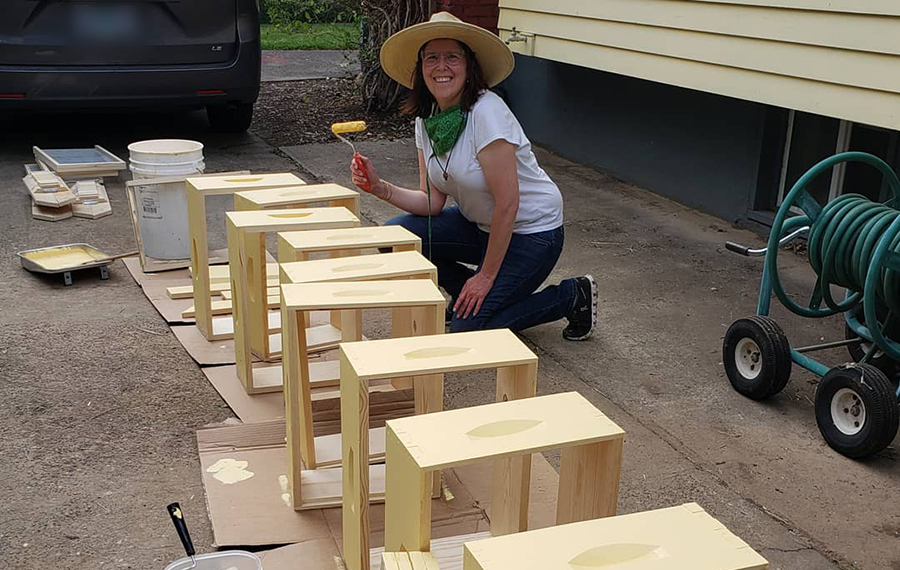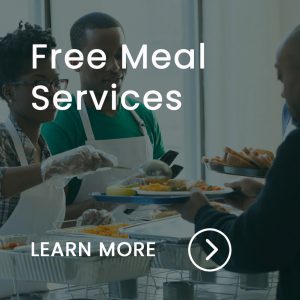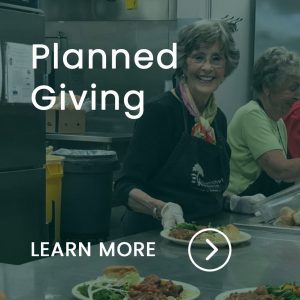This guide to beekeeping will teach you how to set up a backyard beehive and collect honey within a year.
By Christina Seid
Apiarist Katy Fackler builds and maintains beehives in her backyard in Portland, OR. She is also an educator who volunteers to train newbies on how to keep bees and harvest their honey and wax.
Fackler’s unique in that she focuses on beekeeping as a therapeutic and environmentally beneficial hobby rather than a money-making enterprise. She created a beekeeping program at Blanchet Farm outside Portland for people in addiction recovery to learn new skills and heal. She’s taught many people how to set up a backyard beehive.
“It seems to really help the guys. There’s so much that you have to do zone yourself in there,” Fackler says of how beekeeping helps with emotional health. “When you’re in a hive with 30,000 to 40,000 bees, you have to calm yourself down and be present. You have to be present because if you’re not, you’re going to make a mistake.”
As a seasoned beekeeper who’s weathered many trials and errors, and taught many people, Fackler now offers her tips to you.
Step 1: Take a Beekeeping Class
Before you jump in to set up your first beehive, Fackler recommends taking a beekeeping course.
Completing a beginner’s course is essential to ensuring that your bees will be properly taken care of. The course should provide an in-depth experience where you can learn everything you need to know about the basics of beekeeping. You’ll receive information about setting up a hive, where to get your bees, and the first steps of becoming a beekeeper. A good class will dive deeper into other important aspects of beekeeping like disease and pest management to honeybee biology.
Check out the affordable classes from these Portland resources or search for classes in your area.
- Portland Urban Beekeepers
- Our Biz is Bees
- Oregon State University’s Online Apprentice Level Beekeeping Course
After completing a beekeeping class, you can start on your very own hive.
Step 2: Notify Your Neighbors Before You Set Up a Backyard Beehive
It is essential to familiarize yourself with your city’s laws and regulations on beekeeping, especially in an urban area with a dense population. In order to protect yourself and your neighbors, it is vital to follow proper beekeeping practices as determined by your community.
In Portland:
- You are allowed to keep up to four hives.
- Permits are not required, but you must follow Title 13 code standards and best practices.
- Before setting up your hives, you must notify neighbors within 150 feet with a neighbor notification letter.
- For additional information, view the rules, allowances, permits and complaint information about bees and livestock.
Step 3: Supply List
For beginners, Fackler recommends the following supplies, most can be purchased from Amazon or another store of your choice. Experts recommend starting out with two hives because of a higher chance that at least one of them will survive. Beginners also learn from having two hives by comparing them and seeing what works and what doesn’t.
- Bee suit with gloves
- Smoker
- J hook
- Langstroth beehives with frames x2
- Cheesecloth
- Mason Jar (16oz)
- Sugar
- Bees (Bees can be acquired from your local bee club or you can contact one of the many bee vendors from the Portland Urban Beekeepers association.)

Beekeeper Katy Fackler paints bee boxes at home in Portland. Fackler is an expert a teaching people how to set up a backyard beehive.
Step 4: How to Set Up a Backyard Beehive
Find the right location to set up your hives
Place your bees in an area with the recommended amount of sunlight while also ensuring that your bees don’t disturb your neighbors.
“You want the morning sun to come in on the entrance of the hive to warm up the bees in the morning,” advises Fackler. “You want some sort of barrier so you’re not in the flight path of the bees. In my backyard, I have a fence nearby so the bees have to go over the fence instead of going straight into my neighbor’s yard.”
Shake the bees out into the hives and place the queen bee inside
Getting the bees and queen into the hives is a fairly simple process. The bees you order should arrive along with a small box containing the queen. Shake all of the bees into the hive and then put the queen’s box in.
“She’s in her own little special box and you put the box in. She’s inside of something that looks like a matchbox, but it has a little hole made of bee candy,” explains Fackler. “The worker bees actually eat the candy and let her out. By the time she comes out, which doesn’t take long, they’ve gotten used to her scent and they really like her.”
Feed your bees
Before leaving your bees alone to get started on their hive, you want to aid them with a sugar water mixture. Use an internal feeder simply made from a mason jar. Fill it with sugar water and turn it upside down inside the hive.
“I periodically feed my bees,” says Fackler. “If they run out of honey, they have something to eat.”
Leave them be
Allow the bees to get settled and start working on gathering resources and producing honey. Don’t open the hive and disturb them too often. Only check in on your bees periodically to make sure they’re healthy and that everything is going smoothly.
Step 5: How to Maintain a Backyard Beehive
Safety Gear
Before approaching your hives it’s important that you are wearing protective gear. You should make sure to have a safety jacket and your face covered. Safety always comes first when working with the bees.
Smoking
Bees avoid fire so smoke from a smoker signals to them to get back into their hive. It’s a bee safety mechanism. They will go deep into the hive for protection which allows you to more easily check the hive.
Annual Maintenance of a Backyard Beehive
Beehive maintenance is simple, but consistency is key to success. Keeping bees is a commitment like any pet. Maintenance varies with the time of year and weather. While staying consistent with check-ins is crucial, disturbing your bees too often will impact their workflow.
“When you bother the bees, they stop producing,” says Fackler. “Every time you open the hive, you’ve lost a couple of hours where they could be harvesting their honey or getting resources.”
Summer Care
Fackler advises inspecting your hives every 10 days in the warmer summer months when bees are the most active but susceptible to extreme temps. Bees are tolerant to warm temperatures up to the mid-90s, but they don’t like extreme heat. Some beehives can melt in extremely hot conditions.
“Just to check in for 10-15 minutes per hive — sometimes less,” she says. “You have to be consistently looking.”
Spring and Fall Care
During spring and fall, check your hives every 14 days to monitor bee activity, population, and overall health. You want to check for your queen, eggs, and larvae, the state of the honeycomb, and signs of pests.
Winter Care
In the winter, you will bundle up the hives to keep the bees warm. They will hibernate similarly to penguins by huddling together.
“The bees form a cluster the size of a basketball and they vibrate to stay warm,” explains Fackler.

A beekeeper extracts honey from an urban backyard beehive.
Step 6: How to Extract Honey from a Backyard Beehive
You’ve learned how to set up a backyard beehive and now come the sweet rewards. After your bees have settled into their hive, they’ll start producing honey. You can harvest honey only two times a year–once in the spring and once in the summer. It really depends on the individual hive’s health and resources.
The easiest way to extract honey is by using the crush method. You take the wax and honeycomb off of the frame and put them in a cheesecloth. Then you crush it and let the cheesecloth filter out the wax.
More Than Honey
Anyone can become a beekeeper, even if you’re living in the city. Completing a short course, obtaining the correct supplies, choosing the right location, and dedicating time to take care of the bees are all vital elements of keeping a successful beehive.
“It’s a very immersive hobby,” says Fackler who will soon receive a master’s in beekeeping from Oregon State University. “I find it incredibly relaxing.”
If you’re looking for something that’s easy and brings a sense of consistency to your life, this is a perfect choice.

















